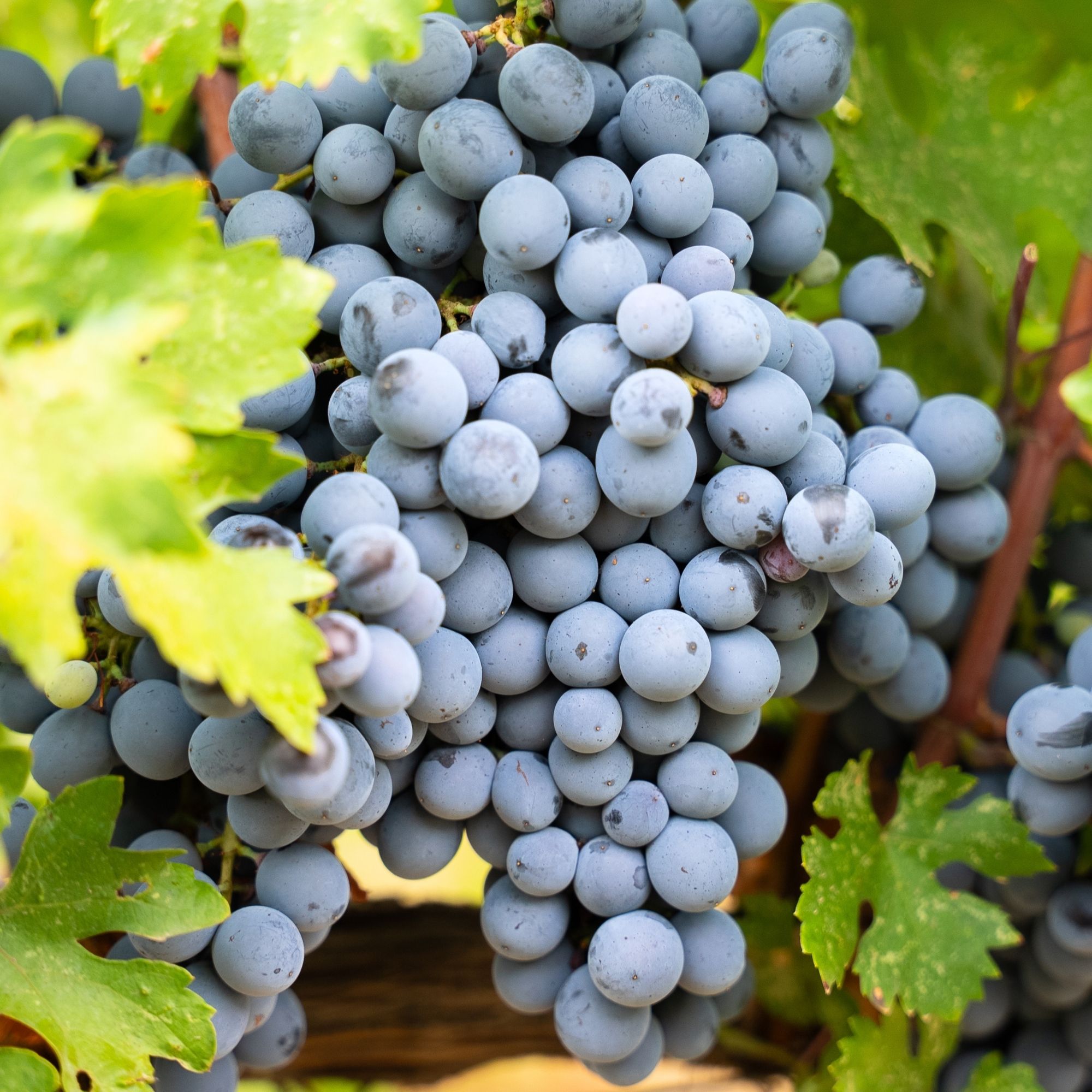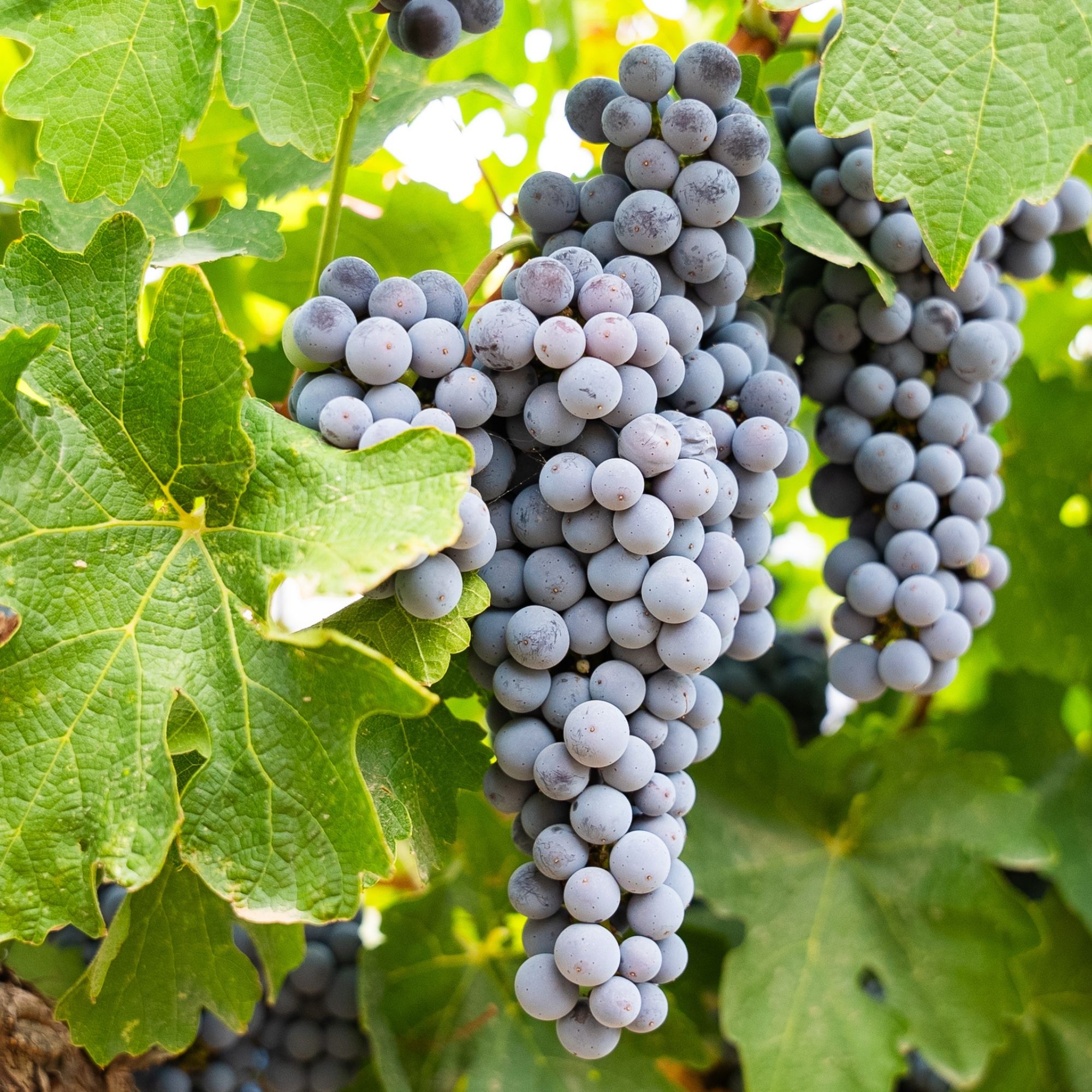Indigenous Grapes

Kalecik Karası
Kalecik Karası is a grape variety grown in Turkey’s Central Anatolia region, particularly in the Kalecik district of Ankara in the basin of Kızılırmak, longest river in Turkey from which it takes its name. The Kalecik Karası grapes develop unique characteristics due to Kalecik’s microclimate and soil composition. The cool nights and warm days of the region contribute to the grapes’ balanced acidity, elegant tannin structure, and rich aromatic compounds. Typically, Kalecik Karası wines have a vibrant ruby-red color and are characterized by red fruit, cherry, blackberry, and subtle spice aromas. These wines, with their medium body and round tannins, pair well with white meats, light red meats, and various cheeses. Kalecik Karası is one of the leading grape varieties in Turkish viticulture, playing a significant role in enhancing the quality and diversity of the region’s wine production.
Hasandede
A Kızılırmak River heritage Hasandede, is a grape variety grown in Turkey’s Central Anatolia region, particularly in Kırıkkale’s Hasandede village. The Hasandede grapes cultivated in Kalecik’s vineyards develop unique characteristics due to the region’s climate and soil properties. The cool nights and warm days of the area help the grapes achieve balanced acidity and aromatic compounds. Wines made from Hasandede grapes are typically light and fresh, with pale yellow color and aromas of citrus, flowers, and minerals. Their light structure and lively acidity make them well-suited to pair with white meats, seafood, and light appetizers. Hasandede is an important grape variety that contributes to the wine diversity of the Kalecik region, offering a distinctive and refreshing option in local wine production.


Hasandede

Narince
Narince is a white grape variety predominantly grown in Turkey’s Central Anatolia region, especially around Tokat. The microclimate and soil properties of Kalecik impart distinctive characteristics to Narince grapes cultivated in this region. These grapes have thin skins and a golden yellow color, featuring medium-high acidity and a balanced structure. Narince wines typically exhibit a pale-yellow color with citrus, green apple, pear, and floral aromas. They are also rich in minerality. Narince wines’ fresh and vibrant structure pairs well with seafood, white meats, and light appetizers.
Öküzgözü
Öküzgözü grape, another Mesopotamian heritage primarily grown in Turkey’s Eastern Anatolia region, especially around Elazığ, in Euphrates River basin, is a red grape variety named after its large, round berries resembling an ox’s eye. The Öküzgözü grapes cultivated in the Kalecik region have medium-thick skins and dark purple color, with high acidity and soft tannin structure. These wines are generally vibrant purple-red, characterized by red fruit, cherry, blackberry, and subtle spice aromas. With their medium body and soft tannins, these wines pair well with red meats, grilled dishes, and various cheeses. Öküzgözü grown in Kalecik is a significant representative of Turkish viticulture, enhancing the quality and diversity of the region’s wine production. Wines made from this grape have gained recognition both locally and internationally, contributing to the global recognition of Turkish red wines.


Öküzgözü

Boğazkere
Boğazkere, of which the homeland is Turkey’s Southeastern Anatolia region, also called Mesopotamia in history, has also been successfully cultivated in Ankara’s Kalecik vineyards in recent years. Kalecik’s unique climate and soil conditions impart a balanced acidity and tannin structure to Boğazkere grapes. The wines produced from these vineyards are deeply colored, rich in tannins, and highly acidic, offering ripe red fruit, spice, and tobacco aromas. The strong tannin structure and pronounced acidity make these wines an excellent match for red meats, especially grilled and roasted dishes. Boğazkere from Kalecik has the potential to develop more complex and rich aromas when aged in oak barrels, enhancing the wine diversity of the Kalecik region.
Bornova Misketi
Herodotus from Bodrum (Halicarnassos), the father of history, mentions the rose and honey-scented Moskhatos wine of Smyrna (Izmir) in the 5th century BC. Thus, Misket becomes the grape variety mentioned in a source for the first time in history. Bornova Misketi, usually grown in Turkey’s Aegean region, particularly around İzmir, has also been successfully cultivated in Kalecik. The Bornova Misketi grapes from Kalecik are thin-skinned and light green, featuring high acidity and intense aromatic profile. The wines produced from these grapes are typically light yellow and vibrant, characterized by citrus, floral, and tropical fruit aromas. Kalecik’s unique microclimate and soil properties impart distinct characteristics to Bornova Misketi grapes. These wines, with their fresh and aromatic structure, pair excellently with seafood, white meats, and light appetizers.


Bornova Misketi
Herodotus from Bodrum (Halicarnassos), the father of history, mentions the rose and honey-scented Moskhatos wine of Smyrna (Izmir) in the 5th century BC. Thus, Misket becomes the grape variety mentioned in a source for the first time in history. Bornova Misketi, usually grown in Turkey’s Aegean region, particularly around İzmir, has also been successfully cultivated in Kalecik. The Bornova Misketi grapes from Kalecik are thin-skinned and light green, featuring high acidity and intense aromatic profile. The wines produced from these grapes are typically light yellow and vibrant, characterized by citrus, floral, and tropical fruit aromas. Kalecik’s unique microclimate and soil properties impart distinct characteristics to Bornova Misketi grapes. These wines, with their fresh and aromatic structure, pair excellently with seafood, white meats, and light appetizers.


